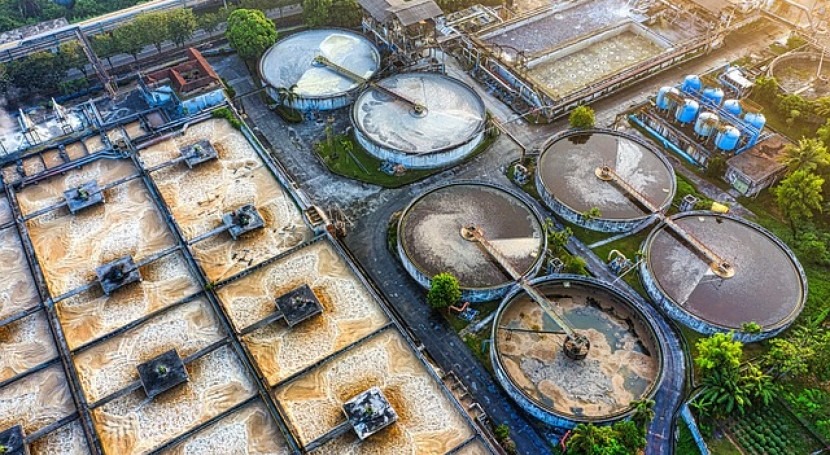Exploring the Role of Biotechnology in Waste Water Treatment
Exploring the Role of Biotechnology in Waste Water Treatment
Blog Article
Strategic Approaches to Enhance Drainage Treatment Effectiveness and Decrease Environmental Impact
In the world of drainage treatment, the mission for boosted efficiency and decreased ecological effect is a continuous difficulty that demands critical remedies. As culture faces the critical to manage water resources sustainably, a nuanced approach ends up being vital. The integration of innovative therapy technologies, energy-efficient processes, source recuperation approaches, boosted nutrient elimination strategies, and wise tracking and control systems represents a diverse framework for dealing with these pressing concerns. What exists at the core of this complicated web of strategies is the possible to change the method we approach waste water treatment, not just as a procedure of disposal, however as an important opportunity for technology and environmental stewardship.
Advanced Treatment Technologies
Cutting-edge membrane purification systems have changed sophisticated wastewater therapy processes, substantially enhancing the removal of impurities. These innovative systems work by compeling water through a semi-permeable membrane layer, effectively separating pollutants from the water stream. The membrane layer's microscopic pores trap contaminants such as microorganisms, infections, and suspended solids, enabling just detoxified water to pass through. This modern technology has actually proven to be extremely reliable in removing a large range of pollutants, consisting of drugs, heavy metals, and organic substances, which are often testing to eliminate with typical treatment techniques.
In addition, membrane layer purification systems offer various advantages over traditional therapy strategies. They call for much less area, produce higher-quality effluent, and are more immune to changes in influent water high quality. Additionally, these systems are highly functional and can be quickly integrated into existing therapy plants or made use of as standalone systems for decentralized applications. As the demand for tidy water proceeds to rise, the fostering of innovative membrane filtration technologies is important to make certain reliable and lasting wastewater treatment methods.
Energy-Efficient Procedures
The integration of energy-efficient processes in wastewater therapy systems is essential for maximizing resource usage and lowering functional costs. One key method to improving power performance in wastewater therapy is the application of advanced aeration systems, such as fine bubble diffusers or surface aerators, which can improve oxygen transfer efficiency and decrease energy usage.
Moreover, enhancing procedure control and automation via making use of advanced sensors and checking systems can boost total power performance by readjusting procedures in real-time based on actual demand and conditions. Implementing energy audits and frequently keeping an eye on energy performance indicators are important practices to identify locations for renovation and track energy-saving campaigns properly. Generally, the fostering of energy-efficient processes in wastewater treatment not only profits the setting however likewise adds to long-term price savings and operational sustainability.
Source Healing Methods
With a concentrate on optimizing source use and sustainability in wastewater treatment systems, the implementation of source healing strategies becomes an essential element in enhancing functional effectiveness. Source healing strategies in wastewater therapy involve the identification and extraction of useful resources from the waste stream, thereby transforming what was once considered waste right into an important property. By carrying out resource healing techniques such as nutrient elimination and recovery, power generation from raw material, and the manufacturing of recyclable water, wastewater therapy plants can reduce ecological effect while optimizing efficiency.

Enhanced Nutrient Removal Strategies
Applying sophisticated nutrient elimination techniques is crucial for enhancing the performance of wastewater treatment systems. One of the vital techniques made use of for enhanced nutrient elimination is the procedure of biological nutrient elimination (BNR), which entails the removal of nitrogen and phosphorus via biological processes.

In enhancement to BNR, progressed therapy approaches such as membrane layer bioreactors (MBRs) and constructed wetlands can also be employed to enhance nutrient removal efficiency. By incorporating these sophisticated nutrient elimination techniques into wastewater treatment systems, markets and districts can properly lower nutrient air pollution and secure the environment.
Smart Monitoring and Control Equipment
Using innovative innovation, the integration of clever surveillance and control systems changes the operational efficiency of wastewater treatment facilities. These systems integrate advanced sensors and data analytics to constantly monitor vital specifications such as pH levels, turbidity, liquified oxygen, and flow prices in real-time. By gathering and analyzing this information, operators can obtain useful insights right into the performance of the therapy processes, enabling aggressive changes to maximize treatment effectiveness.
Smart monitoring and control systems additionally sustain remote tracking abilities, allowing drivers to gain access to real-time information and control functions from off-site locations. This remote ease of access enhances operational flexibility and responsiveness, enabling speedy treatments in situation of system breakdowns or changes in influent high quality. The anticipating upkeep capabilities of these systems assist protect against equipment failures and lessen downtime, ultimately enhancing the total dependability of wastewater therapy operations.
Conclusion
In final thought, strategic methods such as sophisticated treatment modern technologies, energy-efficient procedures, source recovery strategies, enhanced nutrient removal methods, and wise tracking and control systems play an essential function in improving wastewater therapy effectiveness and lessening ecological influence. By implementing these techniques, wastewater treatment plants can improve their general performance, minimize energy consumption, recoup beneficial sources, and ensure conformity with ecological laws. These strategies are important for efficient and lasting wastewater monitoring techniques.

In final thought, strategic techniques such as innovative treatment modern technologies, energy-efficient processes, source recuperation strategies, improved nutrient elimination techniques, and wise monitoring and control systems play a critical role in improving wastewater therapy efficiency and reducing ecological influence.
Report this page